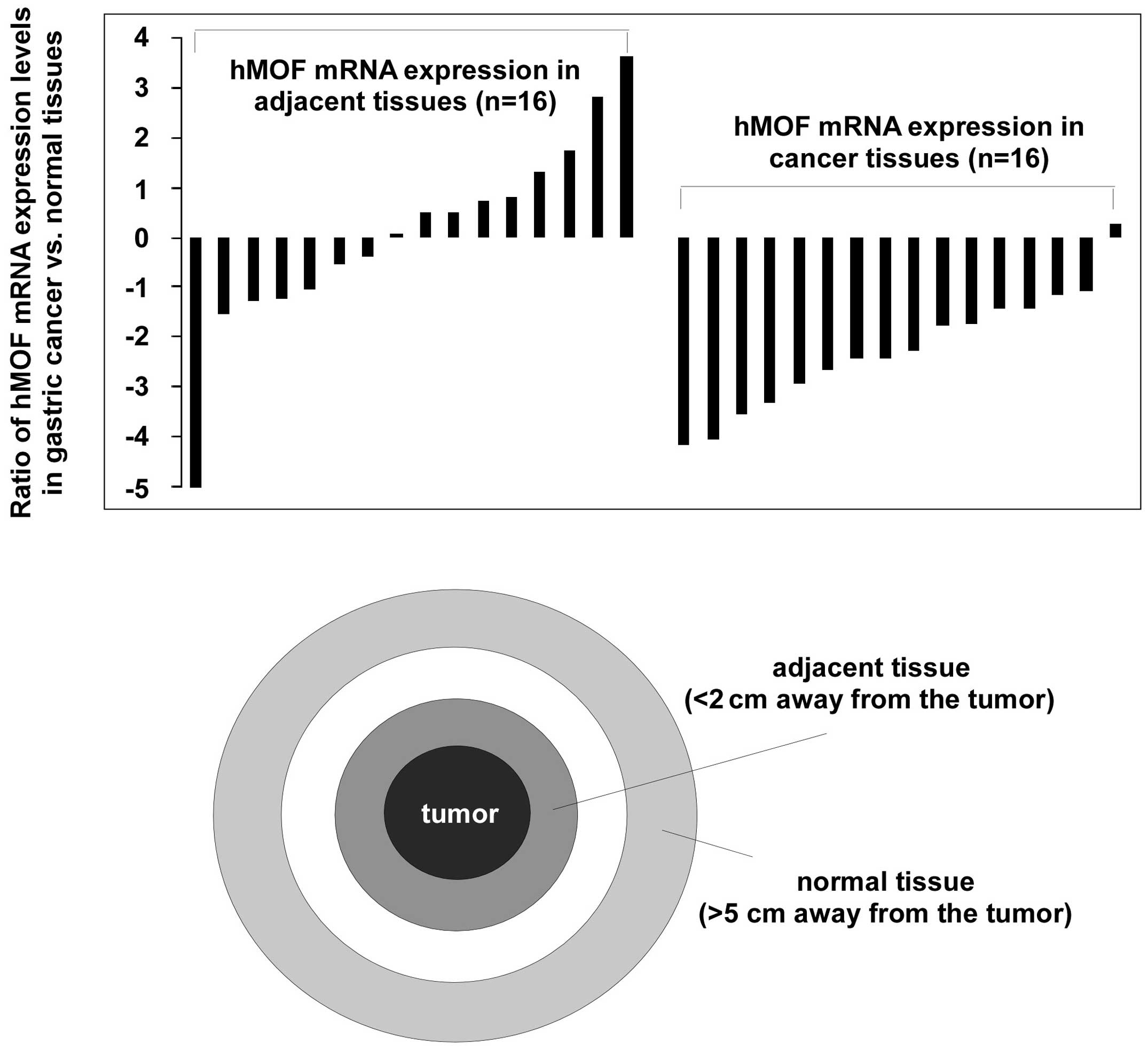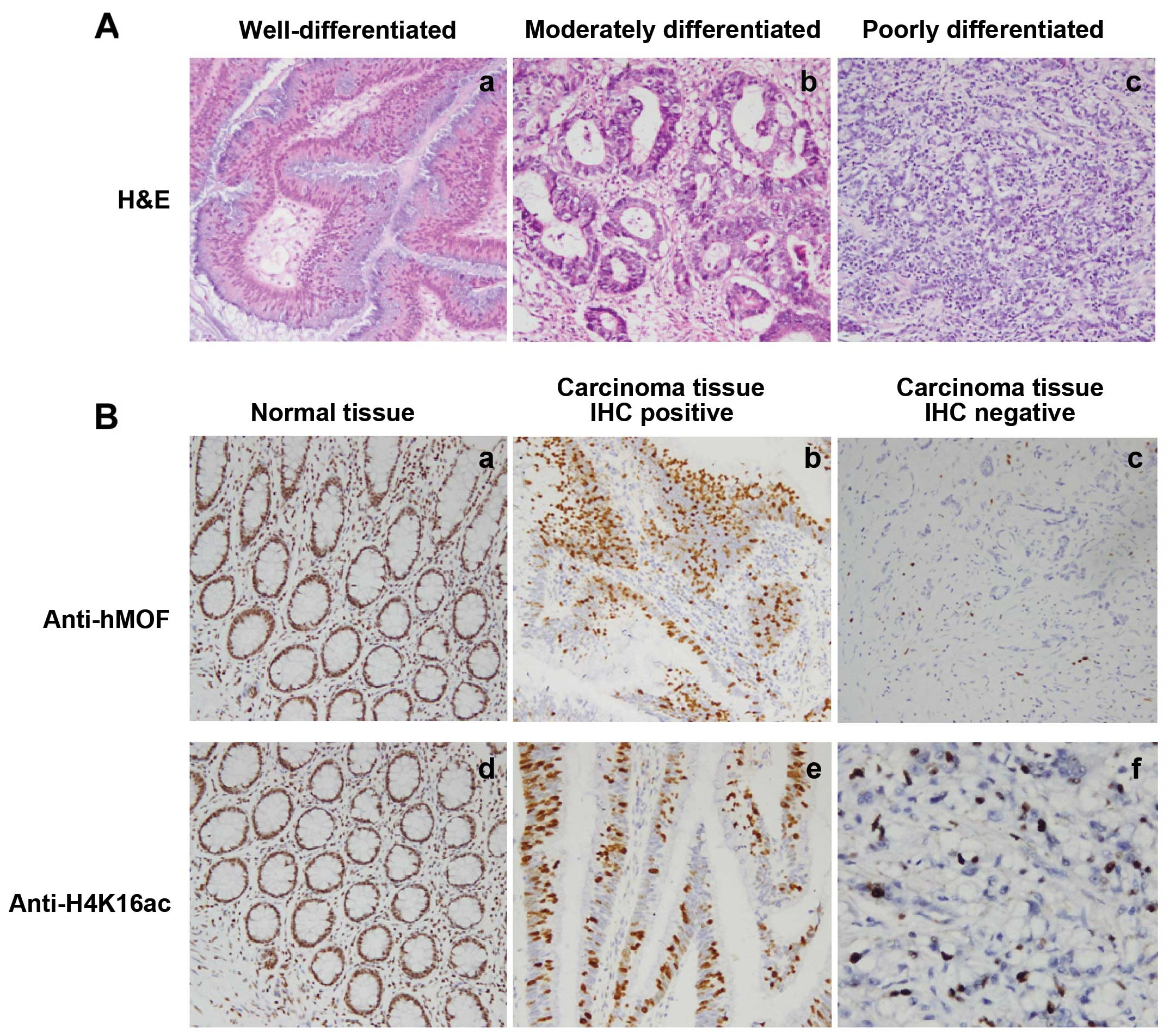|
1.
|
Jin J, Cai Y, Li B, Conaway RC, Workman
JL, Conaway JW and Kusch T: In and out: histone variant exchange in
chromatin. Trends Biochem Sci. 30:680–687. 2005. View Article : Google Scholar : PubMed/NCBI
|
|
2.
|
Waldmann T and Schneider R: Targeting
histone modifications - epigenetics in cancer. Curr Opin Cell Biol.
25:184–189. 2013. View Article : Google Scholar : PubMed/NCBI
|
|
3.
|
Sharma S, Kelly TK and Jones PA:
Epigenetics in cancer. Carcinogenesis. 31:27–36. 2010. View Article : Google Scholar
|
|
4.
|
Bannister AJ and Kouzarides T: Regulation
of chromatin by histone modifications. Cell Res. 21:381–395. 2011.
View Article : Google Scholar : PubMed/NCBI
|
|
5.
|
Hatzimichael E and Crook T: Cancer
epigenetics: new therapies and new challenges. J Drug Deliv.
2013:5293122013. View Article : Google Scholar : PubMed/NCBI
|
|
6.
|
Haberland M, Montgomery RL and Olson EN:
The many roles of histone deacetylases in development and
physiology: implications for disease and therapy. Nat Rev Genet.
10:32–42. 2009. View
Article : Google Scholar : PubMed/NCBI
|
|
7.
|
Shi Y: Histone lysine demethylases:
emerging roles in development, physiology and disease. Nat Rev
Genet. 8:829–833. 2007. View
Article : Google Scholar : PubMed/NCBI
|
|
8.
|
Feinberg AP, Ohlsson R and Henikoff S: The
epigenetic progenitor origin of human cancer. Nat Rev Genet.
7:21–33. 2006. View
Article : Google Scholar : PubMed/NCBI
|
|
9.
|
Jones PA and Martienssen R: A blueprint
for a human epigenome project: the AACR human epigenome workshop.
Cancer Res. 65:11241–11246. 2005. View Article : Google Scholar : PubMed/NCBI
|
|
10.
|
Fraga MF, Ballestar E, Villar-Garea A, et
al: Loss of acetylation at Lys 16 and trimethylation at Lys20 of
histone H4 is a common hallmark of human cancer. Nat Genet.
37:391–400. 2005. View
Article : Google Scholar : PubMed/NCBI
|
|
11.
|
Elsheikh SE, Green AR, Rakha EA, et al:
Global histone modifications in breast cancer correlate with tumor
phenotypes, prognostic factors, and patient outcome. Cancer Res.
69:3802–3809. 2009. View Article : Google Scholar
|
|
12.
|
Barlesi F, Giaccone G, Gallegos-Ruiz MI,
et al: Global histone modifications predict prognosis of resected
non small-cell lung cancer. J Clin Oncol. 25:4358–4364. 2007.
View Article : Google Scholar : PubMed/NCBI
|
|
13.
|
Mosashvilli D, Kahl P, Mertens C, et al:
Global histone acetylation levels: prognostic relevance in patients
with renal cell carcinoma. Cancer Sci. 101:2664–2669. 2010.
View Article : Google Scholar : PubMed/NCBI
|
|
14.
|
Sharma GG, So S, Gupta A, et al: MOF and
histone H4 acetylation at lysine 16 are critical for DNA damage
response and double-strand break repair. Mol Cell Biol.
30:3582–3595. 2010. View Article : Google Scholar : PubMed/NCBI
|
|
15.
|
Carrozza MJ, Utley RT, Workman JL and Côté
J: The divers functions of histone acetyltransferase complexes.
Trends Genet. 19:321–329. 2003. View Article : Google Scholar : PubMed/NCBI
|
|
16.
|
Gupta A, Guerin-Peyrou TG, Sharma GG, et
al: The mammalian ortholog of Drosophla MOF that acetylates
histone H4 lysine 16 is essential for embryogenesis and
oncogenesis. Mol Cell Biol. 28:397–409. 2008.
|
|
17.
|
Smith ER, Cayrou C, Huang R, Lane WS, Côté
J and Lucchesi JC: A human protein complex homologous to the
Drosophila MSL complex is responsible for the majority of
histone H4 acetylation at lysine 16. Mol Cell Biol. 25:9175–9188.
2005.PubMed/NCBI
|
|
18.
|
Cai Y, Jin J, Swanson SK, et al: Subunit
composition and substrate specificity of a MOF-containing histone
acetyltransferase distinct from the male-specific lethal (MSL)
complex. J Biol Chem. 285:4268–4272. 2010. View Article : Google Scholar
|
|
19.
|
Mendjan S, Taipale M, Kind J, et al:
Nuclear pore components are involved in the transcriptional
regulation of dosage compensation in Drosophila. Mol Cell.
21:811–823. 2006. View Article : Google Scholar : PubMed/NCBI
|
|
20.
|
Pfister S, Rea S, Taipale M, et al: The
histone acetyltransferase hMOF is frequently downregulated in
primary breast carcinoma and medulloblastoma and constitutes a
biomarker for clinical outcome in medulloblastoma. Int J Cancer.
122:1207–1213. 2008. View Article : Google Scholar : PubMed/NCBI
|
|
21.
|
Wang Y, Zhang R, Wu D, Lu Z, Sun W, Cai Y,
Wang C and Jin J: Epigenetic change in kidney tumor: downregulation
of histone acetyltransferase MYST1 in human renal cell carcinoma. J
Exp Clin Cancer Res. 32:82013. View Article : Google Scholar : PubMed/NCBI
|
|
22.
|
Song JS, Chun SM, Lee JY, Kim DK, Kim YH
and Jang SJ: The histone acetyltransferase hMOF is overexpressed in
non-small cell lung carcinoma. Korean J Pathol. 45:386–396. 2011.
View Article : Google Scholar
|
|
23.
|
Zhao L, Wang DL, Liu Y, Chen S and Sun FL:
Histone acetyltransferase hMOF promotes S phase entry and
tumorigenesis in lung cancer. Cell Signal. 25:1689–1698. 2013.
View Article : Google Scholar : PubMed/NCBI
|
|
24.
|
Sameer AS: Colorectal cancer: molecular
mutations and polymorphisms. Front Oncol. 3:1142013. View Article : Google Scholar : PubMed/NCBI
|
|
25.
|
Jemal A, Siegel E, Ward E, Murray T, Xu J
and Thun MJ: Cancer statistics. CA Cancer J Clin. 57:43–66.
2007.
|
|
26.
|
Ferlay J, Shin HR, Bray F, Forman D,
Mathers C and Parkin DM: Estimates of worldwide burden of cancer in
2008: GLOBOCAN 2008. Int J Cancer. 127:2893–2917. 2010. View Article : Google Scholar : PubMed/NCBI
|
|
27.
|
Tamagawa H, Oshima T, Shiozawa M, et al:
The global histone modification pattern correlates with overall
survival in metachronous liver metastasis of colorectal cancer.
Oncol Rep. 27:637–642. 2012.PubMed/NCBI
|
|
28.
|
Tamagawa H, Oshima T, Numata M, et al:
Global histone modification of H3K27 correlates with the outcomes
in patients with metachronous liver metastasis of colorectal
cancer. EJSO. 39:655–661. 2013. View Article : Google Scholar : PubMed/NCBI
|
|
29.
|
Liu N, Zhang R, Zhao X, et al: A potential
diagnostic marker for ovarian cancer: involvement of the histone
acetyltransferase, human males absent on the first. Oncol Lett.
6:393–400. 2013.
|
|
30.
|
Edge SB, Byrd DR, Compton CC, Fritz AG,
Greene FL and Trotti A: AJCC Cancer Staging Manual. 7th edition.
Springer; Chicago, IL: 2010
|
|
31.
|
Choschzick M, Oosterwijl R, Muller V,
Woelber L, Simon R, Moch H and Tennstedt P: Overexpression of
carbonic anhydrase IX (CAIX) is an independent unfavorable
prognostic marker in endometrioid ovarian cancer. Virchows Arch.
459:193–200. 2011. View Article : Google Scholar : PubMed/NCBI
|
|
32.
|
Liu X, Cao L, Ni J, et al: Differential
BCCIP gene expression in primary human ovarian cancer, renal cell
carcinoma and colorectal cancer tissues. Int J Oncol. 43:1925–1934.
2013.PubMed/NCBI
|
|
33.
|
Rea S, Xouri G and Akhtar A: Males absent
on the first (MOF): from flies to humans. Oncogene. 26:5385–5394.
2007. View Article : Google Scholar : PubMed/NCBI
|
|
34.
|
Taiple M, Rea S, Richter K, Vilar A,
Lichter P, Imhof A and Akhtar A: hMOF histone acetyltransferase is
required for histone H4 lysine 16 acetylation in mammalian cells.
Mol Cell Biol. 25:6798–6810. 2005. View Article : Google Scholar : PubMed/NCBI
|















